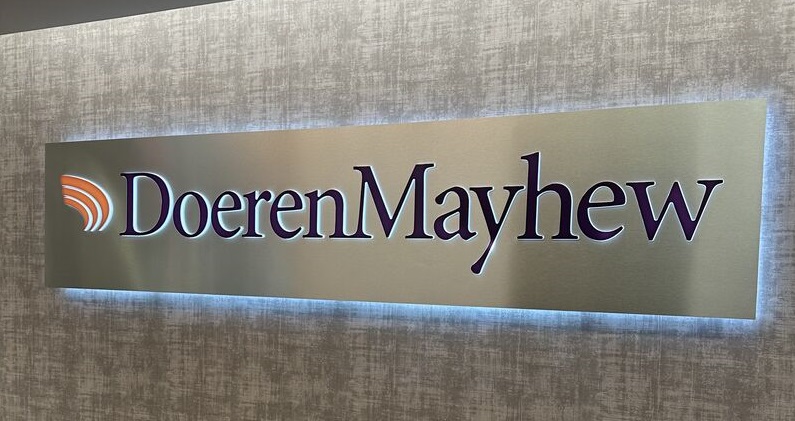By Joel Sinkin and Terrence Putney, CPA.
The first question I typically get asked regarding succession planning is when to start the process. A key issue is how much you personally interact with your clients. An effective transition of client relationships requires a personal touch. Our experience indicates over 80 percent of clients are personally seen by a partner only once per year. Even though you might communicate by email or phone frequently, you cannot effectively transition a personal relationship with a client that way. Transition requires the client experiencing the selling partner/owner and his/her successor working together on the transition. If you are three years from dramatically reducing your time commitment to the firm or retiring altogether, you may only have three visits with your clients to have that experience! Even five years may mean only five more personal interactions!
Clients of small firms are traditionally very partner-loyal, not firm-loyal. For this reason, it takes additional time to transition clients to the successor firm. If you are one-to-five years away from retiring, a Two Stage Deal may be for you. It is a method of retaining reasonable control, autonomy and income while performing a proper transition. Click on this link for more information on the Two Stage Deal (https://bit.ly/2JNeIrd). Since it will take time to identify the “right” successor firm and then work out the deal structure and terms, we advise you start working on your succession plan at least five years prior to your intended date to slow down.
How to Choose Your Successor
Most firms define the “right” buyer as the one that will retain clients which maximizes value. One tool we use in identifying the best match is what we call the four C’s:
- Chemistry: If you don’t want to eat lunch with a potential buyer why would you sell to them? Most of your clients and staff are with you because of positive chemistry. Why would you think your clients and staff would like someone you don’t?
- Capacity: If your firm has one or more partners retiring, does the successor firm have the capacity on a partner level (and the skill set) to replace them?
- Culture: This is an important but elusive topic. Culture is defined by how clients are serviced and billed, the IT platform, staff overtime policies and so much more. We suggest you analyze culture by asking yourself the following questions:
- What is it like to be a partner in the successor firm?
- What is it like to be a staff person?
- What is it like to be a client?
The answers to those last three questions will help you discover if the cultures align.
- Continuity: Change is a dirty word to most people. Ideally your clients see this as the addition of the successor firm and not what was lost of your firm. Will your clients feel there is continuity or, instead, wholesale changes they feel uncomfortable with?
Market Changes
Until recently the market has favored sellers. That has changed dramatically in the last several years.
Staffing shortages have left firms with less capacity than in the past making them less interested in buying firms where partners and staff need to be replaced. Firms owned by Baby Boomers are hitting the market as sellers in increasing numbers and that will continue over the next several years. The supply of sellers is starting to outpace the demand from buyers allowing buyers to become more selective and therefore depressing values. Many profession pundits suggest that soon traditional services provided by accounting firms will be taken over by Artificial Intelligence. Meanwhile, blockchain technology may depress the need for audit and accounting services. This has made some buyers leery of acquiring firms with traditional practices for fear much of the fees generated by these services will decline if not be lost altogether down the road.
There are exceptions. Some geographic areas have a high density of small CPA firms which tends to attract an adequate pool of buyers. Practices with strong consulting niches are more in demand now than traditional A&A and tax firms. A firm with strong young talent is also a more attractive acquisition.
Based on what the future market appears to look like, the trend of decreasing valuations and declining demand will continue. Because there is no way to know what the future holds, we would encourage firms that are pretty sure they will seek a sale or upstream merger in the near term to start the process soon.
Try to lock in your succession plan and price based on today’s marketplace. An accounting firm and its clients are still an asset with tremendous market value. No one is suggesting an owner of a CPA firm should be Santa Claus and give their firm away. Just don’t assume what you think is available today will be there tomorrow.
==========
Joel Sinkin (jsinkin@transitionadvisors.com) and Terrence Putney, CPA (tputney@transitionadvisors.com) are the Senior Partners of Transition Advisors, LLC, (www.transitionadvisors.com and 866-279-8550) which exclusively consults with CPA firms nationally on their growth and succession strategies through merger and acquisition.
Thanks for reading CPA Practice Advisor!
Subscribe Already registered? Log In
Need more information? Read the FAQs




